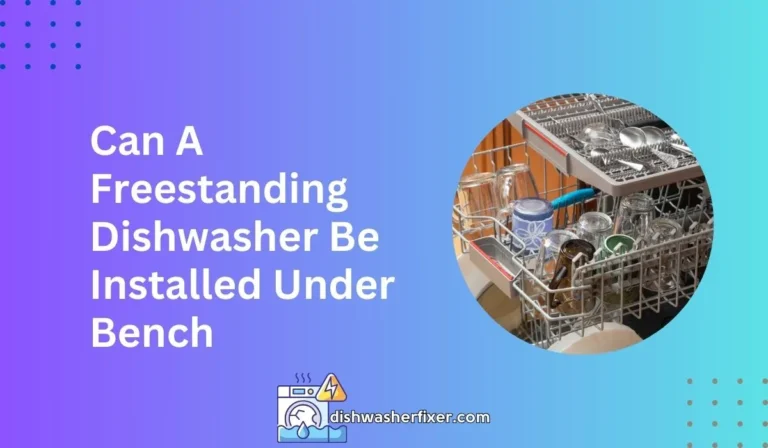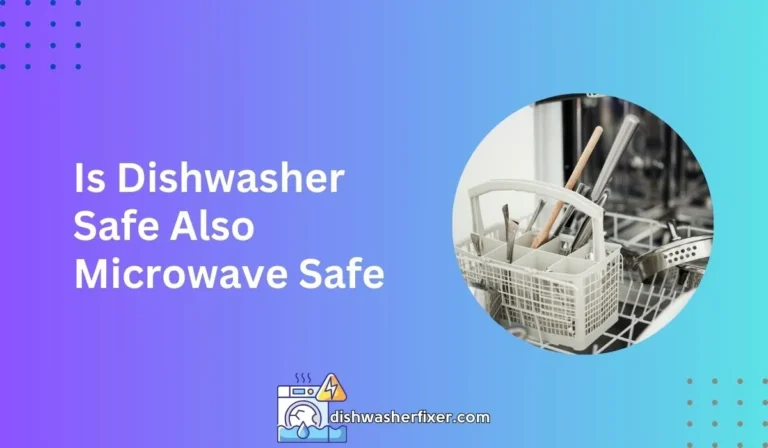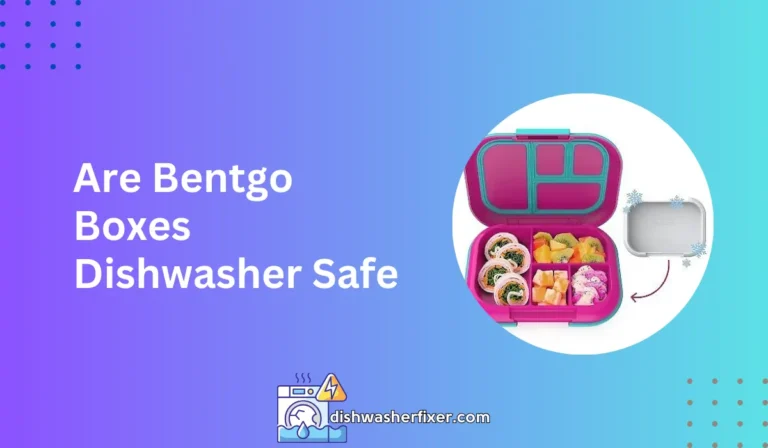Where Does Dishwasher Water Go? The Surprising Journey!
Dishwasher water drains into a home’s plumbing system, either directly into the pipes under the sink or via a garbage disposal unit. Wastewater then travels to a municipal sewage system or a septic tank for treatment and disposal.
Dishwasher Drainage Basics

How Dishwashers Use Water
Dishwashers are convenient appliances that clean dishes by spraying them with water mixed with detergent.
They begin by drawing water from the home’s supply, heating it to the proper temperature, and then pumping it through spray arms to reach all surfaces of the dishes.
After the cleaning cycle, the dirty water needs to be removed to make way for a rinse cycle, if applicable.
Dishwashing Cycle and Drainage
The dishwashing cycle consists of several phases: prewash, wash, rinse, and dry. During the first two phases, water and detergent are used to clean the dishes.
Afterward, the rinse phase uses fresh water to remove any remaining soap. Each cycle ends with the drainage of used water, preparing the dishwasher for the next load or to be emptied and switched off.
The Role of the Dishwasher Pump
At the heart of the dishwasher’s drainage system is the pump. This crucial component has two main functions: it forces water through the spray arms during wash cycles, and it pumps out dirty water during drainage.
The pump is activated at specific times, coordinating the flow of water in and out of the dishwasher.
Connection to Home Plumbing System
The dishwasher connects to the home’s plumbing system to manage water intake and waste. It typically links to the water supply line for fresh water and to the drainage system for waste water disposal.
This connection ensures that waste water is efficiently removed from the dishwasher and directed into the home’s waste water pipes.
Dishwasher Water Outflow Path

The Journey from Dishwasher to Drain
Once the dishwasher pump has done its job, the dirty water begins its journey to the home’s drain.
The water travels through a hose attached to the dishwasher’s pump, which then connects to the plumbing system, ensuring the waste water leaves the appliance and heads toward the appropriate waste removal path.
Types of Connections
There are several ways a dishwasher can connect to the plumbing system. An air gap, installed on the countertop or sink, prevents dirty water from siphoning back into the dishwasher.
A high loop involves running the drain hose to the top of the inside of the cabinet before it goes down to the drain, providing similar protection as the air gap.
Direct connections are less common but involve the hose running straight to the drain or garbage disposal.
Connection to Garbage Disposal or Sink Drain
Many dishwashers are connected to a garbage disposal unit or directly to the sink drain.
This setup helps in breaking down food particles before the waste water enters the sewage system. It’s crucial that the connection is done correctly to prevent clogs and backflow.
Importance of a Proper Drain Hose
The drain hose plays a pivotal role in the proper disposal of dishwasher water. It must be installed without kinks or clogs and positioned to prevent backflow.
Ensuring a smooth path from the dishwasher to the drain is key to avoiding leaks and potential water damage.
Local Plumbing Codes and Regulations
It’s important to be aware of local plumbing codes and regulations, which may dictate how dishwashers should be connected to the plumbing system.
These rules ensure that installations are safe and meet standards that prevent contamination and plumbing issues.
Post-Dishwasher Water Treatment

Municipal Wastewater Treatment Process
After dishwasher water enters the sewage system, it travels to a municipal wastewater treatment facility.
Here, it undergoes several stages of treatment to remove contaminants, such as physical filtering, biological treatment to break down organic matter, and chemical processes to disinfect the water before it’s released into the environment or recycled for other uses.
Septic Systems and Dishwasher Water
Homes with septic systems rely on a different process. The waste water from dishwashers goes into the septic tank, where solids settle at the bottom, and liquids eventually flow out into the drain field.
The soil in the drain field acts as a natural filter, cleaning the water before it seeps back into the groundwater system.
Environmental Impact of Detergents
Dishwasher detergents can have a significant environmental impact. Phosphates and other chemicals in some detergents can cause harm to aquatic life when they enter waterways.
Choosing eco-friendly detergents with biodegradable ingredients helps minimize this impact.
Eco-Friendly Dishwasher Use
To reduce water waste, using the dishwasher efficiently is key. This means running full loads, choosing energy-efficient cycles, and maintaining the appliance to ensure it operates effectively.
By doing so, you can minimize the environmental footprint of your dishwasher and contribute to water conservation efforts.
FAQs About Dishwasher Water Disposal
Where does the water from the dishwasher go after it drains?
The water from the dishwasher drains into the home’s plumbing system, either under the sink or through a garbage disposal, and then it travels to a municipal sewage system or a septic tank.
Can dishwasher water be reused for other purposes?
Generally, dishwasher water is not reused in households due to its contamination with food particles and detergent. It is treated as wastewater.
Does dishwasher water go to the same place as sink water?
Yes, dishwasher water usually drains into the same plumbing system as sink water and is processed through the same sewage or septic system.
Is it safe for dishwasher water to enter a septic system?
Yes, it is generally safe for dishwasher water to enter a septic system as long as the system is properly sized and maintained, and biodegradable detergents are used.
What happens to dishwasher water in areas without a municipal sewage system?
In areas without a municipal sewage system, dishwasher water typically drains into a septic tank where it undergoes treatment before being dispersed into the soil.
Final Thoughts
Dishwasher water drains into the home’s plumbing system, typically via the pipes under the sink or through a garbage disposal. From there, it progresses to either a municipal sewage system or a septic tank.
This journey ensures wastewater is properly treated and disposed of, maintaining sanitation and hygiene within the home.





